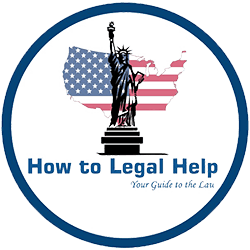Nev. R. Civ. P. 30
Advisory Committee Note 2019 Amendment
The amendments generally conform Rule 30 to FRCP 30, but retain NRCP 30(h), which governs fees associated with expert depositions. Consistent with the federal rule, Rule 30(a)(2)(A)(i) now limits the parties to 10 depositions per side absent stipulation or court order. The Nevada rule,
however, does not count depositions of custodians of records toward the 10-deposition limit per side.
The “7 hours of testimony” specified in Rule 30(d)(1) means 7 hours on the record. The time taken for convenience breaks, recess for a meal, or an adjournment under Rule 30(d)(3) does not count as deposition time.
Discussion between the deponent and counsel during a convenience break is not privileged unless counsel called the break to preserve a privilege, to enforce a limitation ordered by the court, or to present a motion under Rule 30(d)(3). After a privilege-assessment break, counsel for the deponent must place on the record: (1) that a conference took place; (2) the subject of the conference; and (3) the result of the conference, i.e., whether to assert privilege or not. Coyote Springs Inv., LLC v. Eighth Judicial Dist. Court, 131 Nev. 140, 149, 347 P.3d 267, 273 (2015).
If a deposition is recorded by audio or audiovisual means and is later transcribed, any dispute regarding the accuracy of the transcription or of multiple competing transcriptions should be resolved by the court or discovery commissioner.
Drafter’s Note
2004 Amendment
Former subdivision (a) is repealed. New subdivision (a) conforms to the federal rule, as amended in 1993. It provides that leave of court is not required to take a deposition except as set forth in paragraph (2). Paragraph (2)(A) of the federal rule, which limits the number of depositions that may be taken is not included in the Nevada rule. Paragraphs (2)(B) and (C) of the federal rule are redesignated as paragraphs (2)(A) and (B) and adopted with minor modifications to reflect practice in state court.
Subdivision (b) is amended to conform to the federal rule, as amended in 1993, with some exceptions. The amendments to paragraph (1) are technical, but the 15-day minimum notice of examination is retained. Former paragraphs (2), (3), and (4) are repealed. New paragraph (2) permits the party noticing the deposition to choose the method of recording and permits recording by nonstenographic means. It is noted that the last two sentences of the first paragraph of former subdivision (b)(2) are deleted because they are redundant to Rule 26(g) and because Rule 11 no longer applies to discovery requests. New paragraph (3) permits other parties to arrange for recording by a means in addition to that selected by the person noticing the deposition. Unlike its federal counterpart, paragraph (3) of the Nevada rule requires 5 days’ notice to the deponent and other parties. New paragraph (4) provides that all depositions be recorded by an officer appointed or designated under Rule 28 and includes procedures to protect the utility and integrity of nonstenographic recordings. Paragraph (6) is amended to require a subpoena to depose an organization, remove the phrase “have knowledge of” from the second sentence, and provide that the subpoena must advise a nonparty organization of its duty to designate a person who consents to testify on its behalf. Paragraph (7) is amended to permit the taking of a deposition by other remote electronic means in addition to telephonic means, but it retains telephonic deposition procedures that do not appear in the federal rule.
Subdivision (c) is amended to conform to the federal rule, as amended in 1993. The fourth sentence of the former subdivision is repealed consistent with the new provisions of subdivision (b). The other revisions are intended to reduce the number of interruptions during depositions and complement the new provisions of subdivision (d)(1).
Subdivision (d) is amended to conform to the federal rule, as amended in 1993, by adding two new paragraphs. New paragraph (1) requires that any objection during a deposition be made concisely and in a nonargumentative and nonsuggestive manner. It also prohibits instructing a deponent not to answer except in three specific circumstances. Paragraph (2) of the federal rule, as amended in 2000, limits depositions to one day of seven hours; this provision is not included in the Nevada rule. Paragraph (3) of the federal rule is redesignated and adopted as new paragraph (2) of the Nevada rule. It authorizes the court or discovery commissioner to impose sanctions when a fair examination of the deponent is impeded, delayed or otherwise frustrated. Paragraph (3) retains the provisions of the former subdivision (d) and corresponds to paragraph (4) of the federal rule.
Subdivision (e) is amended to conform to the federal rule, as amended in 1993. Under the amended provision, review of the deposition transcript by the deponent is required only if requested before the deposition is completed.
Subdivision (f) is amended to conform to the federal rule, as amended in 1980 and 1993, with the exception of paragraph (3) of the federal rule. Paragraph (1) is amended to require a written certificate from the officer accompany the record of the deposition, which is sealed and sent to the party who arranged for the transcript or recording for safekeeping. Other amendments clarify the use of originals or copies of documents as exhibits to a deposition. The first sentence in paragraph (2) is new and generally provides that the officer must retain stenographic notes or a copy of the recording of any deposition.
The amendments to subdivision (g) are technical. The rule retains in both paragraphs the word “shall” rather than “may,” which is used in the federal rule. The Nevada rule also retains the good cause exception in both paragraphs, which does not appear in the federal rule.
Subdivision (h) is retained with some modifications. It has no federal counterpart. Paragraph (1) is amended to eliminate confusion concerning responsibility for travel expenses for a party’s expert to attend a deposition noticed by another party.
